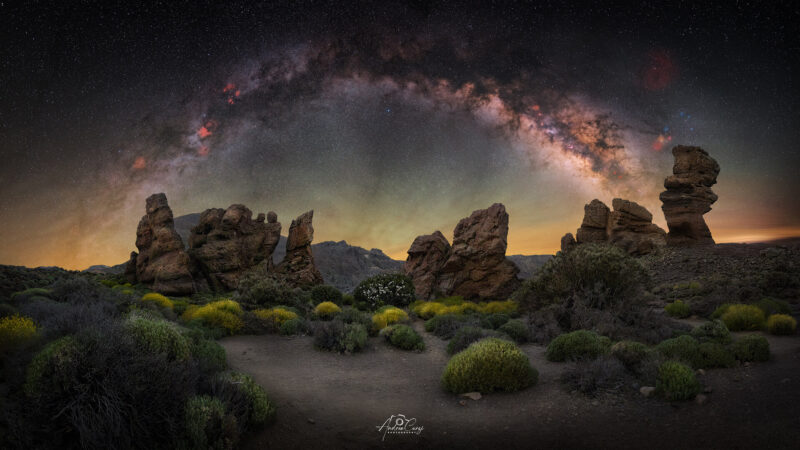We spoke to Andrea Curzi to learn all about how he takes amazing photos like this!
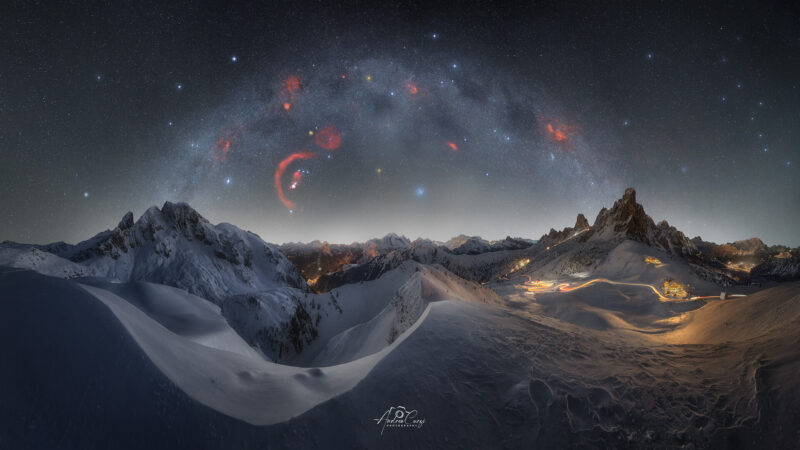
Where are you and where do you do your astrophotography?
I’m in Italy, in the Marche region, and my focus is landscape astrophotography.
Italy is one of the most beautiful countries in the world, but unfortunately, it’s also one of the most light-polluted. Therefore, landscape astrophotography is not easy.
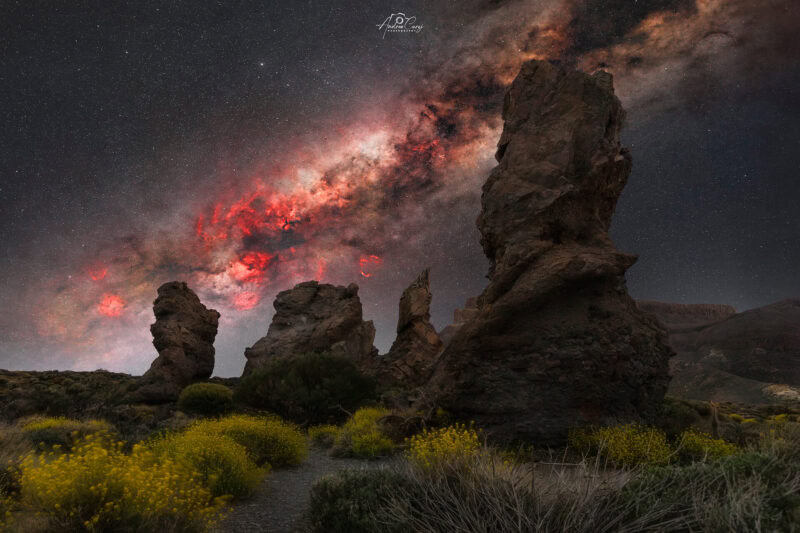
I’m fortunate to live about 2 hours from the Sibillini Mountains, a very beautiful mountain place with a Bortle 4 sky that allows me to have fun without having to travel too far, and I’m about 6-7 hours from the splendid Dolomites!
Photography is my job. I teach workshops, both private one-to-one, where the client chooses the location, and group workshops, as well as trips abroad, like one I did in Tenerife recently —a true playground for landscape astrophotographers!
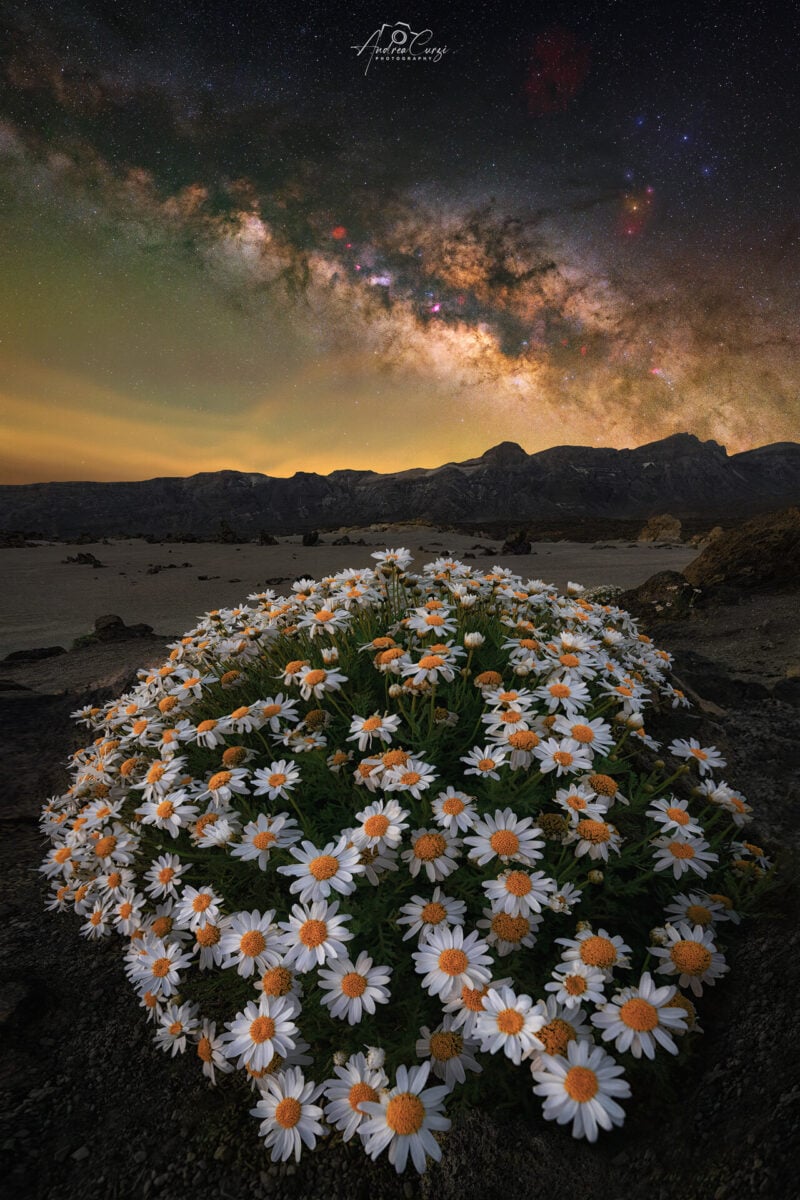
How do you plan your imaging?
To plan my photos I use various apps and PC software.
The planning part is what I love the most and what I dedicate the most time to. I’m very meticulous and careful.
I try to do all the planning before taking a trip, trying to get to know the location before I’ve even been there.
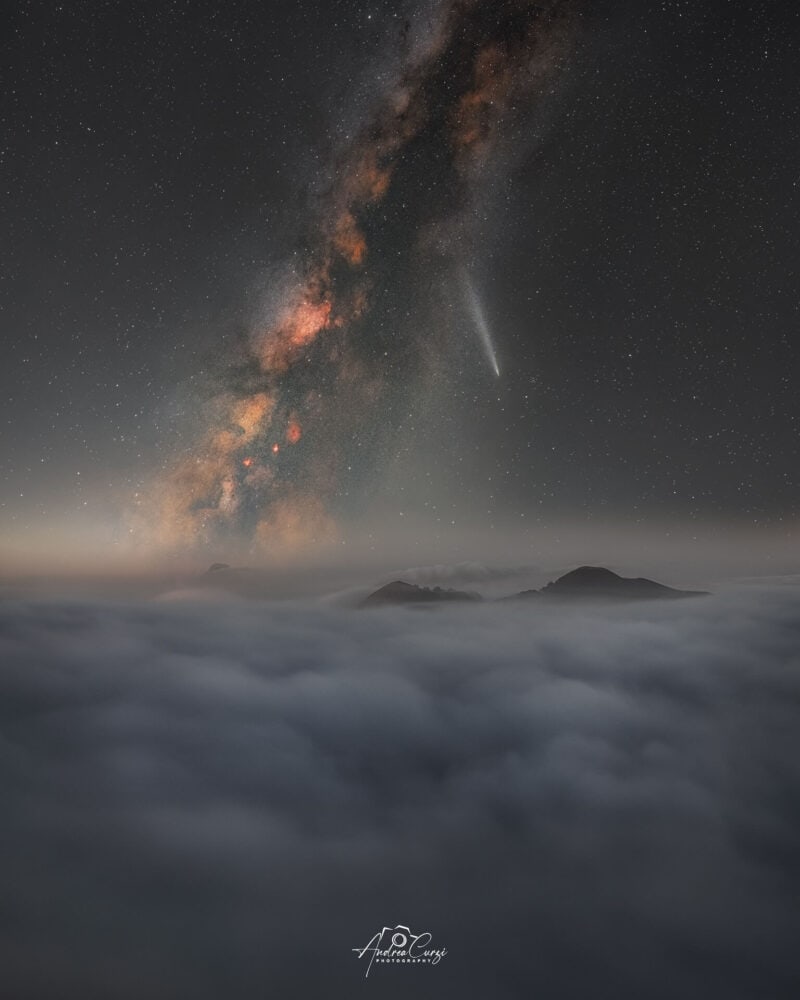
To do this, I use:
Plus, I use Facebook and Instagram groups for inspiration when scouting locations.
I often plan my compositions using the “blue dots” in Google Street View (user-submitted 360-degree photo spheres) to get an idea of the photo I want to take.
Then I go to Google Earth, confirm that the Milky Way will actually pass there, write down the exact time, and then insert the coordinates on a map I create on Google MyMaps.
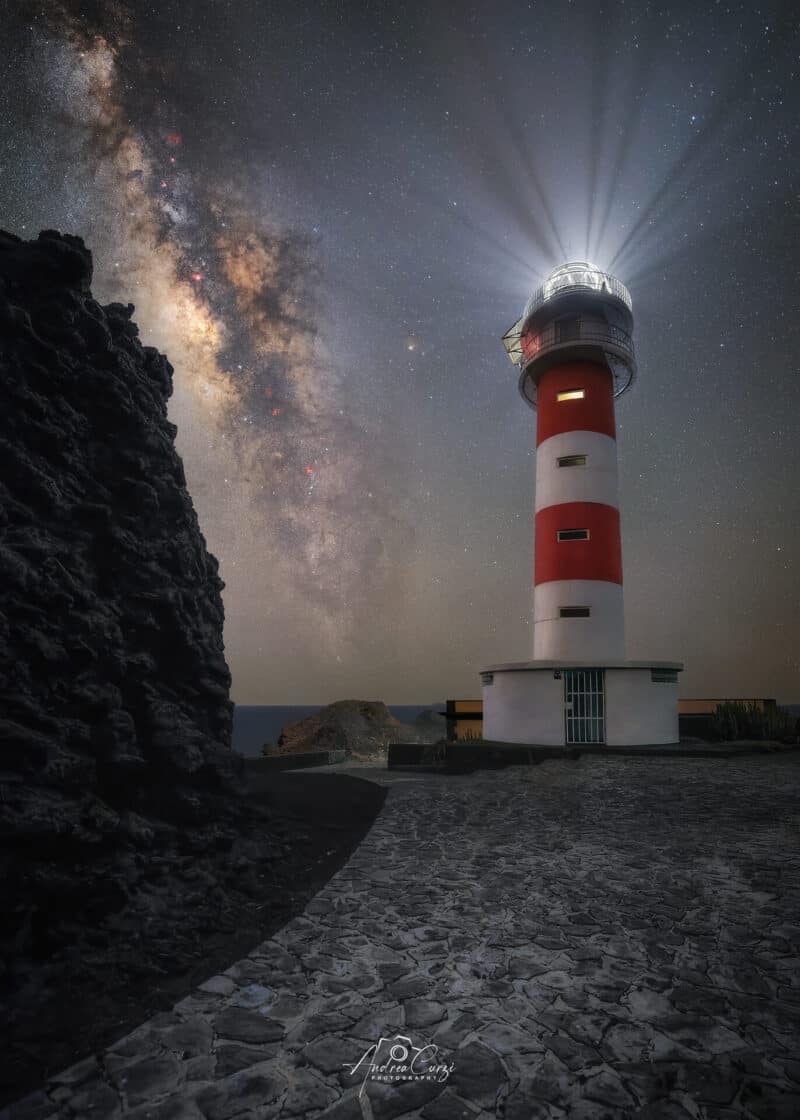
What gear do you use?
I have relatively simple equipment. For cameras:
- I use a stock Canon EOS R to take foregrounds and star trails
- Then I use an old Canon EOS 6D. This is astromodified (Super UV IR Cut) to capture the sky
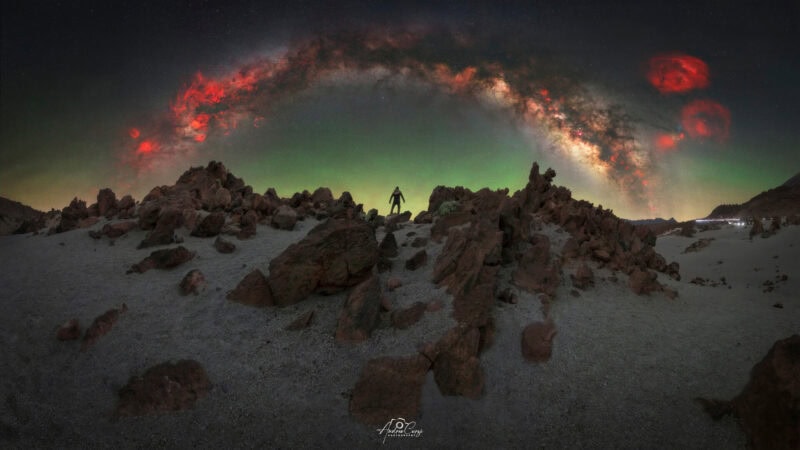
As for lenses, I also have “budget” gear:
- My main lens is a Tamron 17-35 F2.8-4, not the best for astrophotography but perfect for my purposes!
- I also sometimes use the old Canon 50mm F1.8 for mosaics
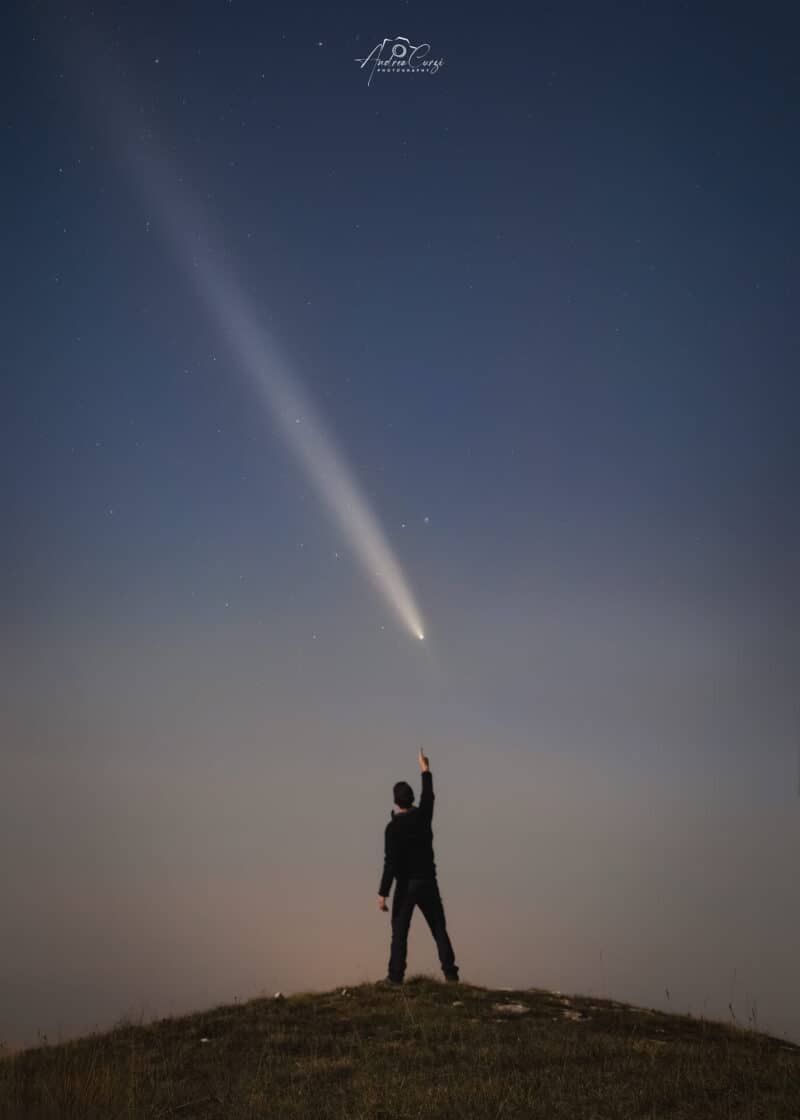
All of this is used on simple and inexpensive star trackers like:
- Omegon Minitrack LX2 (a battery-free mechanical tracker now superseded by the Omegon Minitrack LX3 and Omegon Minitrack LX Quattro)
- Move Shoot Move Nomad
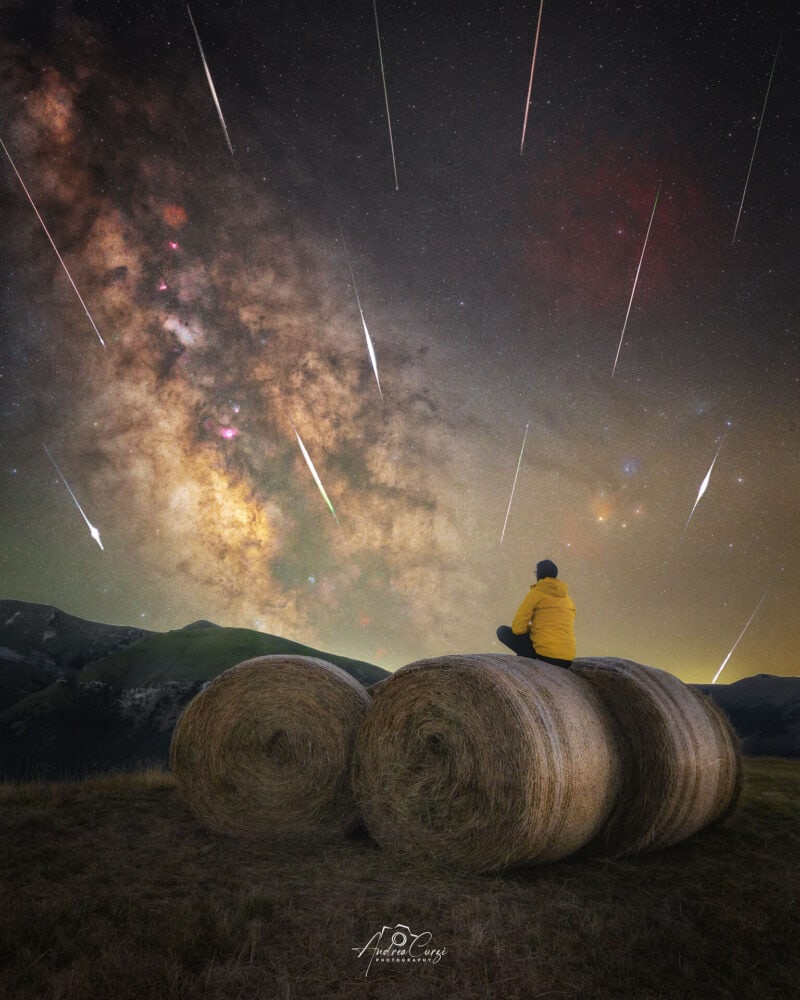
A few months ago, I implemented two Astronomik filters:
These two filters have completely revolutionized my photos!
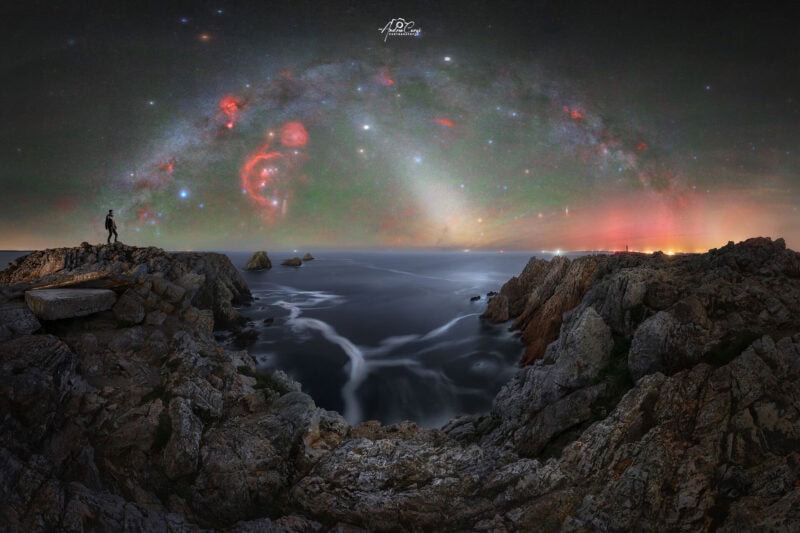
What do you do for post-processing?
For post-production, until a few months ago, I worked exclusively with Photoshop and with single star-tracked shots.
Since integrating the astronomical filters, I’ve started doing long stacking sessions in both RGB and H-alpha and have introduced the use of Pixinsight software.
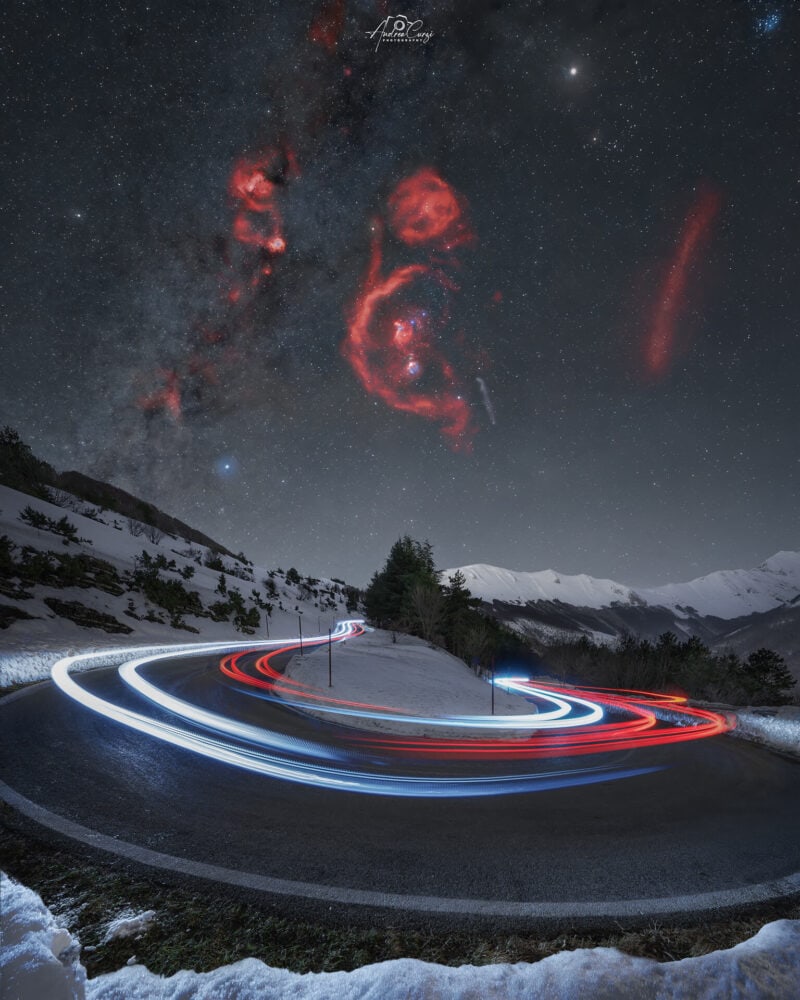
It’s complex, but it has radically changed my images. It’s very powerful software that can get the most out of our files!
See our Skies & Scopes course which includes a full PixInsight tutorial and downloadable image data to practice with!
After pre-processing on Pixinsight, I move on to Photoshop to manage the color and the final touches, aided a little by DXO’s Nik Collection.
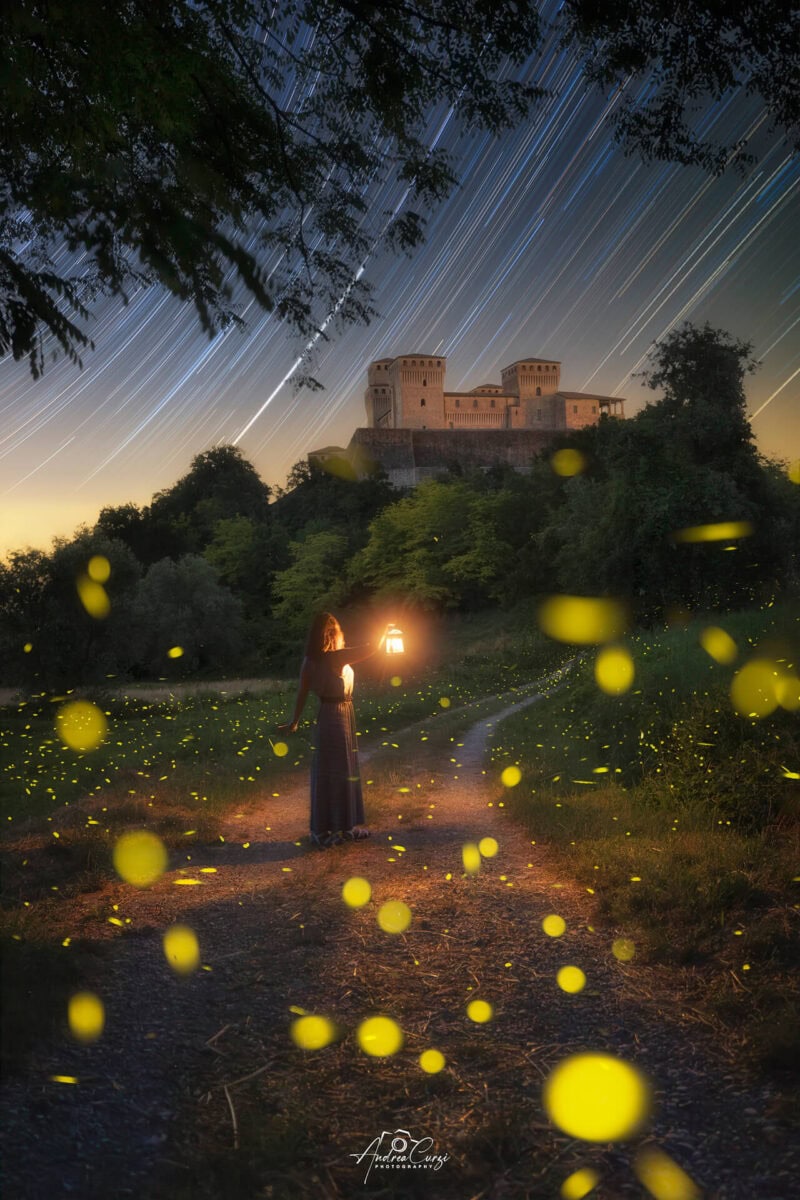
Are there any learning resources you recommend astrophotographers?
As for educational resources, I’m certainly not the best person to give advice because I’m 80% self-taught!
When I get the chance, I watch a few YouTube videos to perfect certain skills, but I don’t have any specific reference points.
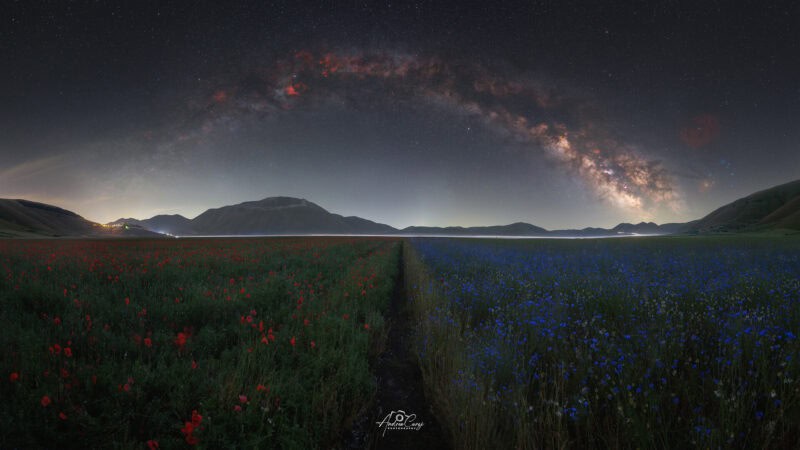
I’ve always preferred to try things out on my own, which wastes a lot of time, but allows me to build my own workflow and personal way of working.
I currently have a video tutorial for sale on my website, suitable for beginners and intermediate users alike. The video is in Italian but available with subtitles in English, French, German, and Spanish.
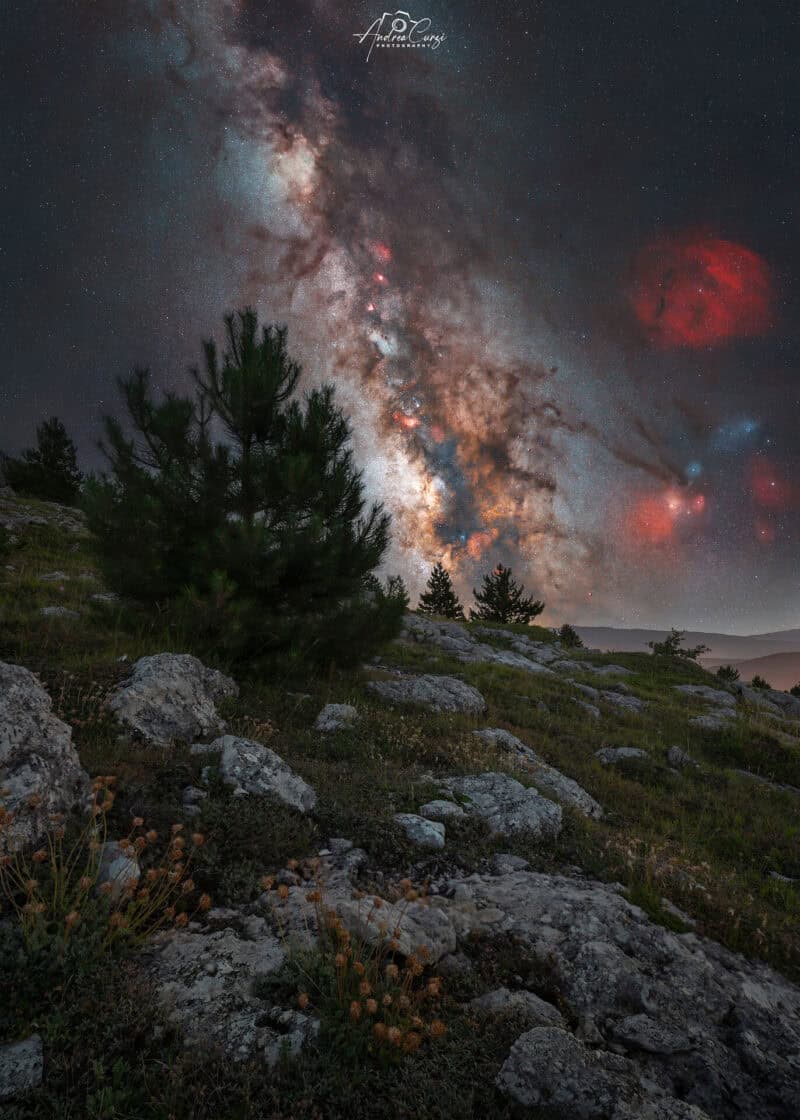
What are your proudest moments in astrophotography?
The moments when I definitely feel most proud are when I win an award or am contacted by a client to teach a class or workshop.
It’s the result of so much work and sacrifice over the years, and it’s always a thrill!
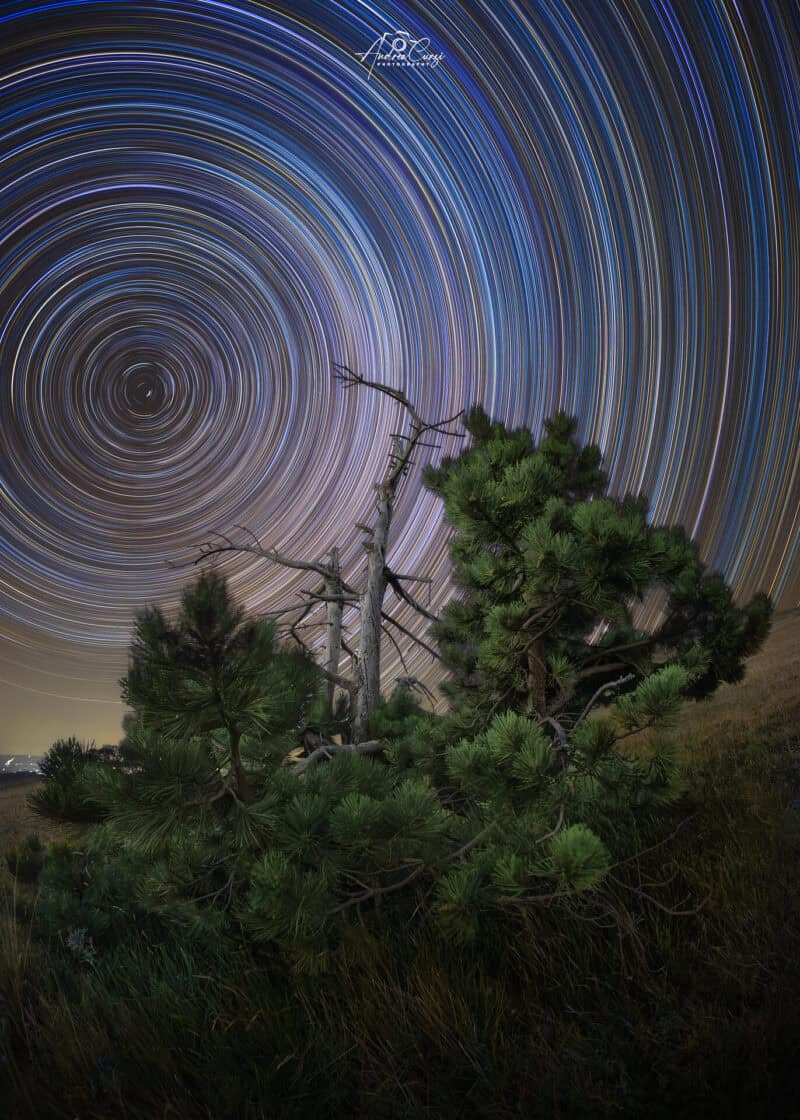
Other moments of immense pride are when I simply talk to people who aren’t in the industry and feel their excitement when I share my adventures.
I was fortunate enough to be a finalist for the Astronomy Photographer of the Year 2024 competition, held in London at the Royal Museum Greenwich.
I was able to attend the official gala, and it was one of the greatest satisfactions I’ve had since I started working in photography, along with the Milky Way Photographer of the Year 2024 award from Capture The Atlas!
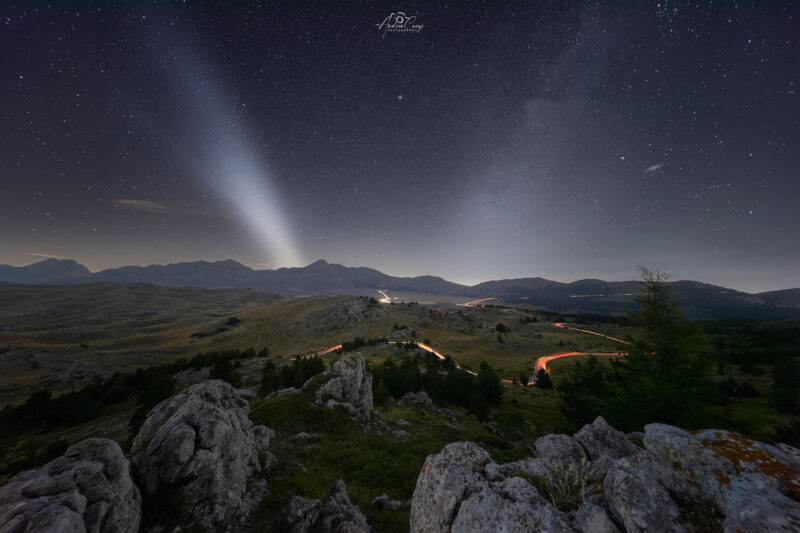
Where can people follow you online?
If you’d like, you can follow me on
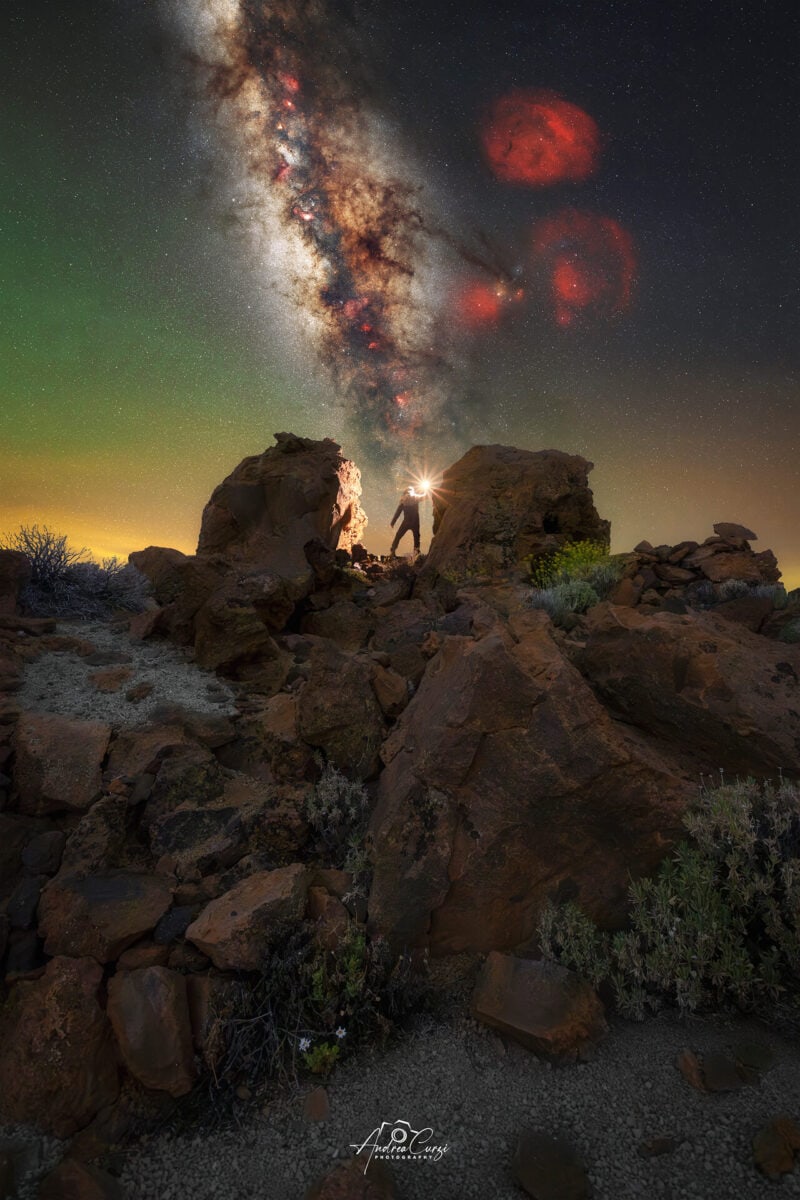
Related Content
- More Astrophotography Case Studies
- Astronomy Photographer of the Year Competition Gear Analysis
- Milky Way Photographer of the Year Competition Gear Analysis
- Best Cameras for Landscape Astrophotography
- Best Lenses for Landscape Astrophotography
- Best Star Trackers
- Course: How to Capture Star Trails
- Course: How to Photograph Deep Sky Objects with a Regular DSLR Camera
